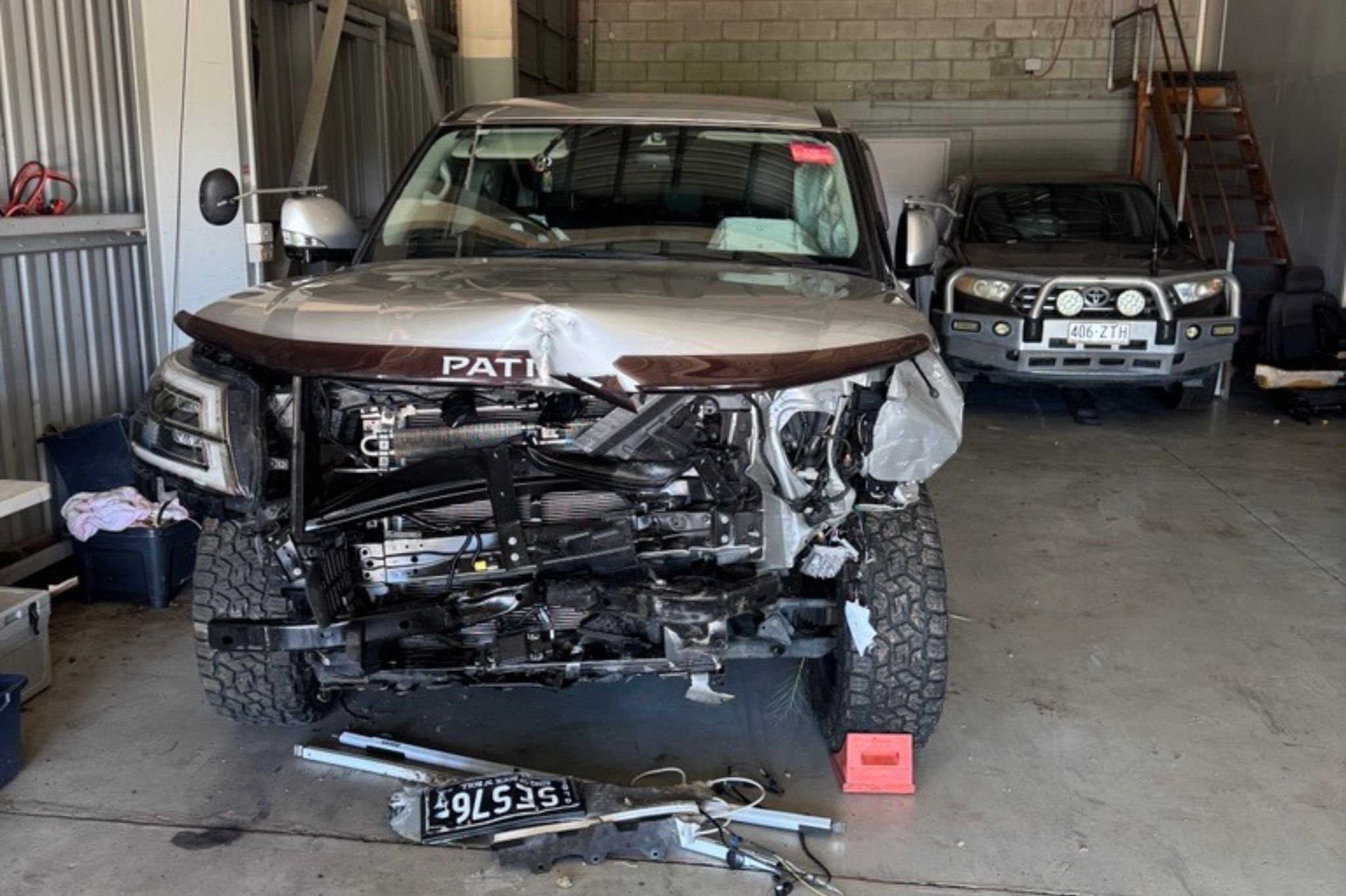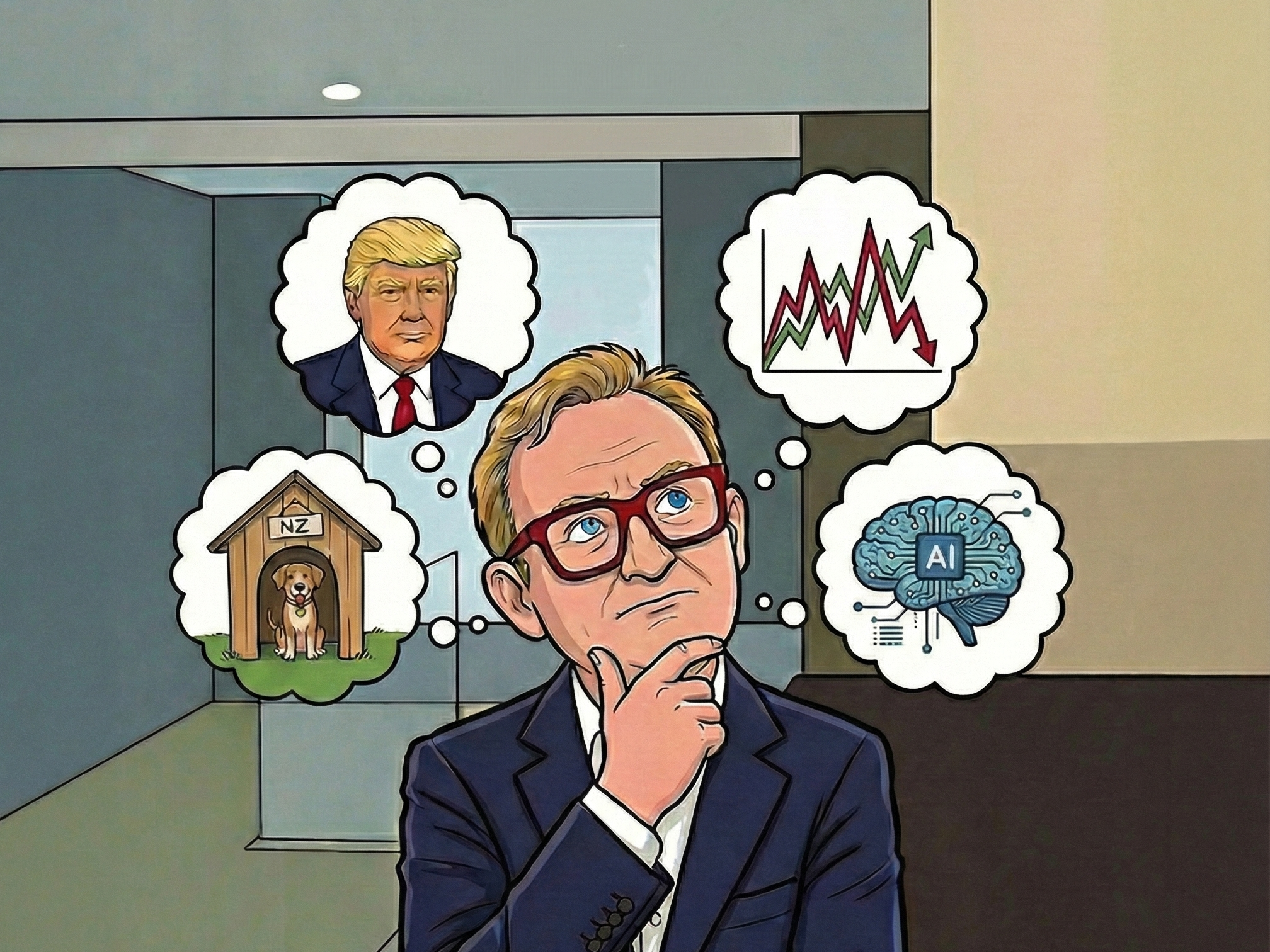The photos above show Paul’s brother’s Nissan SUV following the crash.
The morning had been perfect for my friend Paul’s brother. The Queensland sun warmed his skin as he hitched his modern caravan to his Nissan SUV, ready for a weekend at the beach. The open road beckoned, promising relaxation and the soothing sound of waves.
In an instant, everything changed.
A young driver in a ute carelessly pulled out of a driveway directly into Paul's brother's path. There wasn't enough time to brake. The split-second decision to swerve off the road sent both vehicle and caravan into a roadside ditch and up the embankment.
The next thing Paul's brother remembers is waking to unfamiliar voices. Paramedics were already tending to him, alerted by technology he didn't even realise had activated.
The Value of Integrated Safeguards
Modern vehicles incorporate multiple layers of protection that operate silently until needed – an integrated systems designed to protect occupants when things go wrong.
The airbags deployed. Safety belts tightened automatically to prevent additional movement during impact. The caravan's brake trailer system engaged to prevent a catastrophic rollover. Perhaps most remarkable was the iPhone's Life iOS feature; upon detecting the crash, it simultaneously alerted emergency services and sent notifications to family members with the exact location of the accident.
The Investment Portfolio Parallel
Like modern vehicles, well-constructed investment portfolios incorporate multiple safety systems that may seem invisible until market conditions deteriorate.
Consider the parallels between vehicle safety systems and investment safeguards:
Diversification across asset classes is your 5-star safety rating
Defensive assets are like airbags, providing cushioning during market downturns
Risk management strategies act as safety belts
Rebalancing mechanisms are brake trailer systems, preventing portfolio ‘rollovers’
Liquidity buffers are crumple zones that absorb unexpected financial shocks
Transparent reporting and monitoring systems alert incidents, like Life iOS
When Paul's brother purchased his vehicle, he likely didn't spend hours contemplating the engineering behind its safety systems. He trusted professionals had designed these features to activate precisely when needed.
Similarly, robust investment portfolios operate with sophisticated protection mechanisms working behind the scenes:
Custodial services ensure assets are held securely and separately from the financial institution managing them (an essential layer of security).
Fee transparency means investors understand exactly what they're paying for, with no hidden costs eroding returns.
Tax efficiency strategies ensure investments are structured to minimise unnecessary taxation (maximising what actually reaches investors' pockets).
Due diligence processes thoroughly assess potential investments based on their liquidity, management stability, fund size, and longevity – factors that can significantly impact outcomes during market turbulence.
Even with all these technological advances, the human element remains essential. In the investment world, having an experienced financial adviser who understands both market dynamics and client circumstances provides critical human oversight. They help investors remain alert to changing conditions while maintaining perspective through market cycles.
When Crashes Happen
Market corrections, like vehicle accidents, are inevitable despite our best efforts to avoid them. The difference between catastrophic loss and manageable setback often comes down to preparation.
Paul's brother walked away from what could have been a devastating accident. While the vehicle and caravan sustained damage, the integrated safety systems performed exactly as they should have.
Well-constructed investment portfolios may experience damage during market downturns – but their built-in protections will help ensure the financial wellbeing of their owners remains intact.
In this case, the young ute driver received a fright they'll never forget. In the investment world, the market also delivers short and costly lessons for those who make mistakes or overlook things.
Thankfully, with financial journeys – among others – we can benefit from the accumulated wisdom that has become today’s best practice. Modern portfolio management takes a systemic approach that incorporates defensive elements while still allowing progress towards the destination.
The Expert Behind the Wheel
Just as a well-engineered vehicle needs a competent driver, a sophisticated investment portfolio needs expert guidance. This is where a qualified financial adviser comes in clutch.
A professional adviser doesn't merely select investments. Like auto-engineers integrating multiple vehicle safety systems, skilled advisers build tailored portfolios with layered protections against market volatility, inflation, longevity risk, and unforeseen events.
Your adviser serves as both navigator and safety instructor. They ensure your investment vehicle has all the best safety features:
Regular maintenance through portfolio reviews and rebalancing
Adaptive cruise control via dynamic asset allocation that responds to changing market conditions
Early warning systems through ongoing monitoring and timely communications
Emergency response protocols with predefined actions for market corrections
Most importantly, they're in the passenger seat during the journey – providing a reassuring presence during smooth stretches and crucial guidance when the road gets rough.
Don't Skimp on Quality and Value
Paul's brother didn't cut corners when purchasing his vehicle and safety equipment – this decision may have saved his life. The quality engineering and advanced safety features proved invaluable when disaster struck.
Similarly, it’s buyer beware regarding low-cost investment options, as these can lack crucial protections. Thorough due diligence might require more effort or initial cost – but this investment in quality can protect your financial worth when markets turn hostile.
Value in investing, like value in vehicle purchases, isn't about finding the cheapest option. It's about securing the greatest long-term benefit relative to cost. A marginally higher fee for a well-constructed portfolio with appropriate safeguards is insignificant compared to the protection it provides should markets crash.
Comprehensive due diligence is your financial equivalent of crash testing. Never skip this critical step, whether you're selecting individual investments or choosing a financial adviser. The rigorous assessment of things like management quality, business model sustainability, competitive advantage, and intrinsic value creates an invisible yet powerful protective barrier around your wealth.
While we can't prevent every accident on life's highways, proper preparation with experienced professionals can transform potential disasters into manageable events. In both driving and investing, the most valuable protection often remains invisible until the moment it's needed most – but having quality, value-focused systems in place makes all the difference between recovery and ruin.
Nick Stewart (Ngāi Tahu, Ngāti Huirapa, Ngāti Māmoe, Ngāti Waitaha) is a Financial Adviser and CEO at Stewart Group, a Hawke's Bay and Wellington based CEFEX & BCorp certified financial planning and advisory firm. Stewart Group provides personal fiduciary services, Wealth Management, Risk Insurance & KiwiSaver scheme solutions. Article no. 414.
The information provided, or any opinions expressed in this article, are of a general nature only and should not be construed or relied on as a recommendation to invest in a financial product or class of financial products. You should seek financial advice specific to your circumstances from a Financial Adviser before making any financial decisions. A disclosure statement can be obtained free of charge by calling 0800 878 961 or visit our website, www.stewartgroup.co.nz




